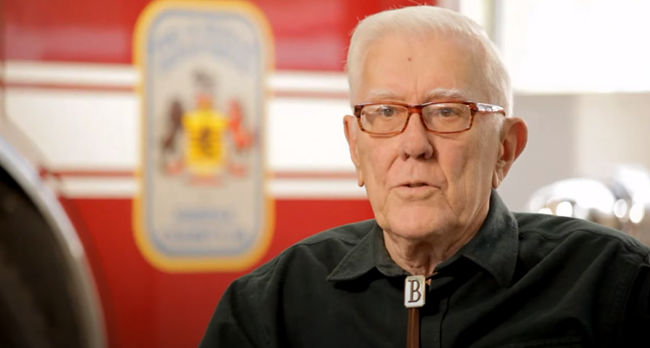Quick Quiz: A Hazmat Father's Day
A Hazmat Father's Day
Happy Father's Day! Kick off Dad's Day weekend with this short quiz highlighting contributions to hazardous materials training and emergency response made by "the Father of Modern Hazmat Thinking"—Ludwig Benner Jr.

Pictured: Ludwig Benner, Jr. Photo credit: Firehouse.com
Benner developed a decision-making process to help firefighters evaluate hazmat incidents. It goes by the acronym...
Not quite.
Detect HM Presence. Estimate Likely Harm Without Intervention. Choose Response Objectives. Identify Action Options. Do Best Option. Evaluate Progress.
The DECIDE acronym represents key decision-making points that occur during a typical HAZMAT emergency. “The intent of the DECIDE process,” according to Benner, “is to help the responder get ‘ahead of the curve’ during a HAZMAT incident.”
That's right.
Detect HM Presence. Estimate Likely Harm Without Intervention. Choose Response Objectives. Identify Action Options. Do Best Option. Evaluate Progress.
The DECIDE acronym represents key decision-making points that occur during a typical HAZMAT emergency. “The intent of the DECIDE process,” according to Benner, “is to help the responder get ‘ahead of the curve’ during a HAZMAT incident.”
It can be argued that Benner’s work influenced the development of major US regulations—including OSHA’s primary standard for emergency response operations, known as
Not quite.
HAZWOPER stands for Hazardous Waste Operations and Emergency Response. It is an OSHA health and safety Standard found at 29 CFR 1910.120 that details training requirements for personnel who respond to emergencies involving hazardous substances (and other groups who work with and around hazardous substances).
That's right.
HAZWOPER stands for Hazardous Waste Operations and Emergency Response. It is an OSHA health and safety Standard found at 29 CFR 1910.120 that details training requirements for personnel who respond to emergencies involving hazardous substances (and other groups who work with and around hazardous substances).
Benner first identified a need for improved hazmat response while working for this agency.
Not quite.
While working for the NTSB in the 1960s and 70s, Benner was troubled by the number of deaths and injuries among firefighters responding to hazardous materials incidents. This led him to re-think training methods for emergency responders.
That's right.
While working for the NTSB in the 1960s and 70s, Benner was troubled by the number of deaths and injuries among firefighters responding to hazardous materials incidents. This led him to re-think training methods for emergency responders.
Benner created the General Hazardous Materials Behavior Model (GEBMO) as a model for how hazmat container failures occur. This was influenced by incident(s) in
Not quite.
Incidents in ALL of these cities influenced Benner. The first iteration of the GEBMO flow chart in 1975 was influenced by the idea that hazmat incidents were not much different from other "risky processes", according to Benner. This was then redesigned in 1980 and finalized in 1998.
That's right.
The first iteration of the GEBMO flow chart in 1975 was influenced by the idea that hazmat incidents were not much different from other "risky processes", according to Benner. This was then redesigned in 1980 and finalized in 1998.
Happy Father's Day! Thanks for checking out the quiz.
We present this quiz with special thanks to author and hazardous materials specialist Robert Burke, who wrote a moving tribute to Benner for Firehouse. That article served as inspiration and a main source of information for this piece.
We leave you with a short video clip of Mr. Benner discussing principles of effective emergency response.
Find a Post
Recent Posts
Compliance Archives
Download Our Latest Whitepaper
What to do before, during, and after a RCRA hazardous waste inspection to defend your site from rising State and Federal penalties.

By submitting your phone number, you agree to receive recurring marketing and training text messages. Consent to receive text messages is not required for any purchases. Text STOP at any time to cancel. Message and data rates may apply. View our Terms & Conditions and Privacy Policy.
